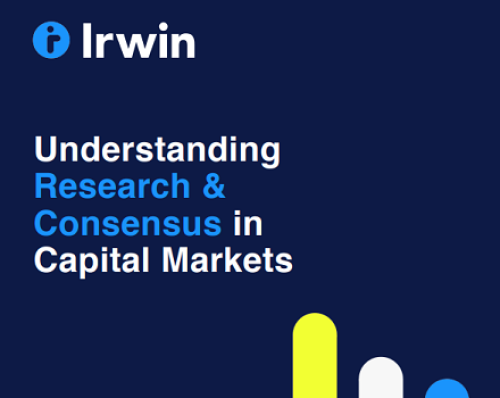A perennial IR challenge is how to prioritize your time and focus across your company’s sell-side followers.
That remains the case even though average levels of analyst coverage are falling. According to new research from IR Magazine, the typical number of analysts for a North American company is 10.3 in 2023, down from 11.1 last year and 13 before the pandemic.
On a recent IR Magazine Webinar, held in partnership with Visible Alpha, speakers from different sides of the capital markets discussed the changing sell-side landscape and how IR teams can get the most from their analyst relationships.
Click here to watch a recording of the webinar.
Andrew Cooper, vice president of healthcare equity research at Raymond James, said the amount of money being allocated to equity research is falling, so research firms must take a closer look at their coverage to make sure it aligns with their business objectives.
While there are various reasons for picking up or dropping a stock, Cooper said companies that are viewed as a heavier lift are ‘not as attractive as they used to be’. Issuers that have a lack of institutional traction are also less appealing, he added.
Peggy Reilly Tharp, vice president of global IR at ICL Group, the specialty minerals company, said she has lost several analysts over the last three years without replacement. ‘It’s very important to try to make it easier for them because I need them to stay engaged,’ she said.
Place your bets
But experiences among panelists varied. Jason Schmidt, vice president of IR at Upstart, an artificial intelligence-powered lending platform, said that while some individual firms have cut back coverage, overall his company has seen a rise in followers in recent years.
He suggested IR teams think about where they want to ‘place their bets’ when it comes to coverage. ‘There are always going to be analysts who are better regarded within that pool and those are the ones you need to protect the most,’ he said.
For companies with a larger number of analysts, there has to be a recognition that not everyone is going to get the same level of service, Schmidt added: ‘I really need to pick the analysts who have the most influence… even if they don’t have a positive opinion of the company. That’s where I’m going to get the most out of it.’
Giuseppe Montefinese, manager of contributor relations for the US at Visible Alpha, said IR teams should think about what number of analysts would be optimal for their business and not assume that gaining more is always preferable.
He added that there remains a strong appetite for high-quality research. ‘Although there may be fewer resources being applied to that function, we’re seeing and hearing that it’s still very much valued,’ he explained.
For companies that want to increase their follower numbers, Reilly Tharp advised webinar viewers to look for the analysts who have the most impact and point out how they can bring something new to the table. Helping analysts to see how they can ‘stand out’ and become ‘the voice of the space’ is ‘really intriguing to them,’ she said.
‘Luckily, buy-siders are pretty boisterous about who they think the smartest people on the sell side are, so they do a little bit of the targeting for you,’ noted Schmidt.
‘As far as getting them on board goes, ultimately they’re trying to drive calls [and] have a differentiated opinion. If you can commit to giving them enough time to really understand the story better than average, that’s the baseline necessity. Then on top of that, some level of assurance around corporate access, non-deal roadshows – things like that are the cherry on top.’
Effective relationships
Once coverage is established, technology can play a key role in supporting relationships and helping to spread the attention of IR teams across a variety of firms, according to the webinar panel.
Schmidt discussed how the growth in virtual engagement since the Covid-19 pandemic has helped with allocating executive time to different firms. It’s now easier to ‘splice’ meetings into the management team’s regular working day, he said.
In addition, Reilly Tharp mentioned how third-party data platforms can help ease the burden of discussions between IR and analysts – for example, by offering an independent source of data covering different business units.
‘It’s much easier for people to look at us versus our competitors, for us to look at us versus our competitors, and to be able to differentiate our story or make more of it to an analyst,’ she said.
‘There are data and tools out there to help you free some of your time for either other projects or strategic initiatives for the organization,’ noted Montefinese. ‘A lot of the things that were historically done manually, which comes with more errors, have been streamlined.’
For some sectors, which have been hit hard over the last few years, the focus right now is on maintaining sell-side relationships ahead of a hoped-for turnaround in institutional interest, explained the panel.
Fintech valuations are currently ‘very depressed,’ said Schmidt. ‘My focus is really much more on continuing the dialogue and making sure the same leaders on the sell side are up on the story… When there’s a pivot, we’ll be able to move quickly, and they’ll be able to ramp up the calls and outreach and everything they do.’
‘Prior to 2023, I was very able to talk about the long term,’ added Reilly Tharp. ‘This year, unfortunately, we’ve been answering more short-term [questions], so the story has changed. I think it’s changed for a lot of people.
‘It’s going to be helpful to turn into 2024 and maybe get back to the long-term strategy of a company. Let’s stop going quarter to quarter and get back to where we need to be. And I think the sell side wants to get there, too.’
To listen to a recording of the webinar, please click here.










